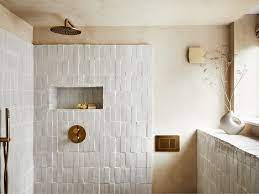In the ever-evolving landscape of interior design, wet rooms have emerged as a popular choice for those seeking a harmonious blend of functionality and aesthetics. Characterized by their open and waterproof design, wet rooms offer a contemporary alternative to traditional bathrooms. This comprehensive exploration aims to dissect the various facets of wet rooms, examining their advantages, challenges, and essential considerations.
Aesthetics and Design Freedom:
Wet rooms embody a sense of modernity and simplicity. The absence of enclosures and barriers allows for seamless integration with diverse design schemes, enabling homeowners to express their creativity without limitations.
The result is a visually striking and spacious bathroom environment. Experimenting with materials, textures, and colors becomes an exciting venture, giving homeowners the freedom to craft a truly unique space.
Accessibility:
The open-concept nature of wet rooms promotes accessibility, making them an ideal choice for individuals with mobility challenges. The elimination of steps and barriers facilitates easy entry and exit, catering to the needs of people of all ages and abilities.
This inclusivity factor ensures that wet rooms aren’t just about style but also about fostering a universally welcoming and functional environment.
Easy Maintenance:
The streamlined design of wet rooms extends to their maintenance. Without the hindrance of shower doors or curtains, cleaning becomes a breeze. The absence of nooks and crannies minimizes the risk of mold and mildew, translating to a hygienic and low-maintenance bathroom space.
This advantage not only saves time but also contributes to a more sustainable and healthy living environment.
Property Value:
Beyond their functional benefits, wet rooms can enhance property value. The contemporary appeal of these open spaces, coupled with the perception of luxury, often resonates positively with potential homebuyers, making them a strategic investment for homeowners.
A well-designed wet room can become a unique selling point, setting a property apart in a competitive real estate market.
Waterproofing Concerns:
The Achilles’ heel of wet rooms lies in the critical need for proper waterproofing. Any lapses in installation or subpar waterproofing materials can lead to water seepage, structural damage, and costly repairs.
Engaging experienced professionals for installation is crucial to avoid these potential pitfalls. Investing in high-quality waterproofing materials and thorough application ensures the longevity and durability of the wet room.
Ventilation Challenges:
Ensuring adequate ventilation in wet rooms is paramount. The absence of enclosed spaces requires efficient air circulation to prevent humidity buildup, which could contribute to the growth of mold and compromise the air quality within the space.
This challenge can be addressed through strategic placement of ventilation systems, such as exhaust fans, and the incorporation of materials that resist moisture.
Space Limitations:
While wet rooms exude an air of spaciousness, they may not be universally suitable for all bathroom sizes. Smaller bathrooms, in particular, may require meticulous planning to optimize the available space effectively and avoid overcrowding.
Clever storage solutions and space-saving fixtures become essential in navigating these spatial constraints without compromising the aesthetic or functionality of the wet room.
Professional Installation:
The importance of professional installation cannot be overstated. Engaging experienced contractors with a proven track record in wet room installations ensures that waterproofing is executed meticulously, safeguarding against potential water damage and structural issues.
Their expertise extends beyond mere installation, encompassing a comprehensive understanding of design considerations, moisture management, and plumbing intricacies.
FAQs:
Q1: Are wet rooms suitable for small bathrooms?
A: While wet rooms can be challenging in smaller spaces, creative design solutions and space optimization techniques can make them a viable and stylish option for compact bathrooms. Integrating multifunctional fixtures and using reflective surfaces can create an illusion of space.
Q2: How do wet rooms impact property value?
A: Well-designed wet rooms can significantly enhance property value, attracting potential buyers with their modern and luxurious appeal. However, it’s crucial to ensure that the design aligns with broader market preferences.
Q3: Is ventilation crucial in wet rooms?
A: Yes, proper ventilation is paramount in wet rooms to prevent humidity-related issues, ensuring a healthy and comfortable environment. Consider incorporating both mechanical and natural ventilation methods for optimal results.
Q4: Can I install a wet room myself?
A: While DIY installation is possible, it is strongly recommended to enlist the services of professionals to guarantee proper waterproofing and mitigate potential installation errors. Professionals bring a wealth of experience and technical know-how, minimizing the risk of future issues.
Conclusion
In summary, wet rooms stand as a testament to the evolution of bathroom design, offering a perfect fusion of form and function. The advantages, such as aesthetics and accessibility, make them an attractive choice for modern homeowners. However, navigating the challenges, especially concerning waterproofing and ventilation, necessitates careful consideration and professional expertise. By weighing these factors thoughtfully, individuals can embark on the journey of integrating wet rooms into their homes with confidence, creating spaces that are both visually stunning and functionally efficient. The ongoing innovation in wet room design ensures that they remain a dynamic and sought-after feature in contemporary living spaces.

A group of home improvement enthusiasts and bathroom design experts, combines in-depth knowledge and a shared passion to deliver engaging, informative content that guides readers through the world of bathroom innovation and style.

Leave a Reply